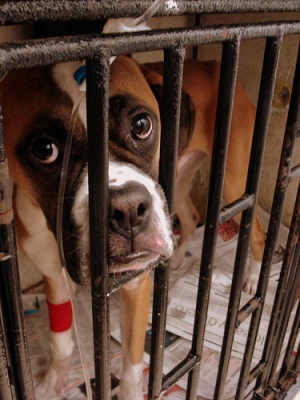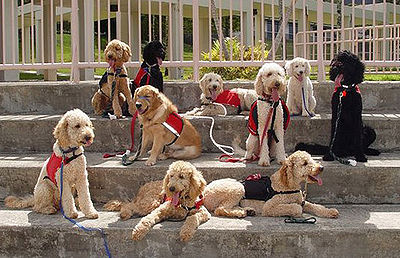
Information from Ohio State University for treating Intervertebral Disc Disease and Wobbler’s Disease.
Evaluation of Novel Spinal and Orthopedic Devices in the Dog
Purpose
The purpose of this study is to evaluate clinical function and evidence of bone healing after implantation of two new devices developed specifically for the dog.
Background
In this study, we would like to evaluate two new implants that have been developed specifically for the dog. The first is a spinal implant that is placed between the bones (vertebrae) in the neck in order to stabilize and fuse the bones. This device would be appropriate for dogs that require surgical management of intervertebral disc disease or Wobbler disease. The second implant is a metal spacer that is used to replace bone that is damaged by bone cancer (osteosarcoma). Most dogs with osteosarcoma undergo amputation, but we are very interested in being able to preserve the leg by removing the diseased bone and replacing it with an implant in order to restore strength to the bone. The new implant would be placed into the defect in your dog’s bone in the expectation that bone would grow into the implant and incorporate it into the skeleton.
Inclusion Criteria
To qualify for enrollment in this study, dogs must have either:
Intervertebral disc disease or Wobbler disease that requires surgical management; or Been diagnosed with Osteosarcoma
Study Design/Treatment Schedule
The overall goal of this study is to document clinical function and evidence of bone healing after implantation of these new devices. 12 dogs with intervertebral disc disease and 12 dogs with bone cancer will be recruited into this study. We will compare clinical function and bone healing before surgery and at intervals after surgery. The assessment of clinical function will involve the use of a force and pressure sensitive walkway system that allow us to document how much your dog is using each leg after surgery, objectively assessing his/her degree of lameness. We will assess bone healing using standard X-rays, a bone mineral density scan (essentially, a modified X-ray) and the measurement of specific “bone markers” in the blood. The additional procedures that are required will not pose a significant risk to your dog. No additional drugs will be administered since we will collect our data while your animal is under sedation for regular radiographs routinely taken during recheck evaluations. The results from this study will help us to determine the normal pattern of healing after surgery and to make rational decisions regarding the most appropriate treatment option for an individual dog presenting with orthopedic or neurological disease.
Client Compensation
The owner is responsible for all standard fees for surgery and post-operative assessments, including office visits and examinations.
Contact
Dr. Matthew Allen, [email protected], for further information.
Ohio State University


